
The plan is to use this 8 foot parabolic dish as the antenna.
We also have a larger 10 foot dish in storage.
Cameron focussed on designing and building the local oscillator.
This is nontrivial, as we have chosen to work at 1.4GHz, the frequency
of the famous 21cm hydrogen line. The local oscillator needs to execute
small steps in frequency near 1.4GHz, while holding the frequency constant
at each step. The local oscillator frequency is controlled by a microprocessor
programmed to accept simple commands from a terminal. Shown below
are the exterior and interior of the local oscillator, along with
the microprocessor that will eventual control the frequency.
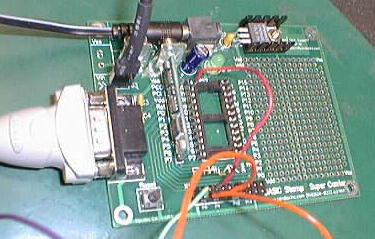
Future progress on the radiotelescope will require testing and debugging the local oscillator, and then constructing the low noise pre-amp, the mixers and filters, and power meter circuitry. Then there is the issue of building the two-axis mount to control the direction of the dish, also under computer control. There is a lot left to do!
Cameron went to Caterpillar as a programmer immediately after graduation. Her longer-term plans are to pursue an advanced degree in Astronomy.
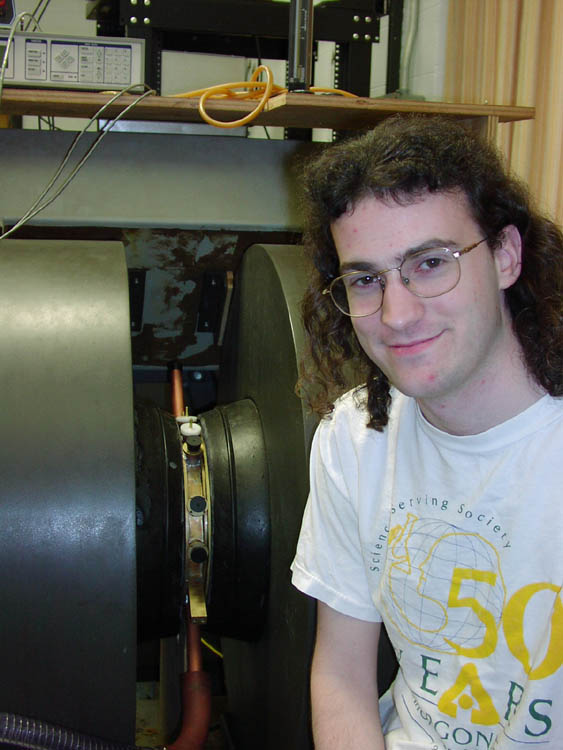 Jeff Smith, class of 2001, built a fixed-frequency cyclotron for his senior
honors project. Supported by a Ford Fellowship and the Richter Fund
for independent research, Jeff began this project in the summer before
his junior year. The cyclotron was designed to accelerate protons
to an energy of 1.5 MeV. The device makes use of the 2 Tesla magnet
in the NMR lab, as well as the radiofrequency sources and power amplifiers
in that lab. Jeff came very close to seeing beam before graduation
rudely cut his project short. He thoughtfully left the project
is a state ready for another ambitious student to bring it to fruition.
A few days after graduation, Jeff moved to Ithaca, NY to begin work towards
a PhD at Cornell University, one of the premier schools for accelerator
physics.
Jeff Smith, class of 2001, built a fixed-frequency cyclotron for his senior
honors project. Supported by a Ford Fellowship and the Richter Fund
for independent research, Jeff began this project in the summer before
his junior year. The cyclotron was designed to accelerate protons
to an energy of 1.5 MeV. The device makes use of the 2 Tesla magnet
in the NMR lab, as well as the radiofrequency sources and power amplifiers
in that lab. Jeff came very close to seeing beam before graduation
rudely cut his project short. He thoughtfully left the project
is a state ready for another ambitious student to bring it to fruition.
A few days after graduation, Jeff moved to Ithaca, NY to begin work towards
a PhD at Cornell University, one of the premier schools for accelerator
physics.
The first few pictures of the cyclotron give you a sense of its overall size. Below, details of the RF feedthroughs (which feed the Dees) and the ion source (at the center of the machine) are visible.
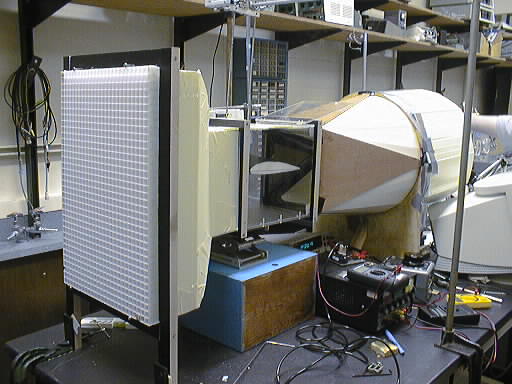
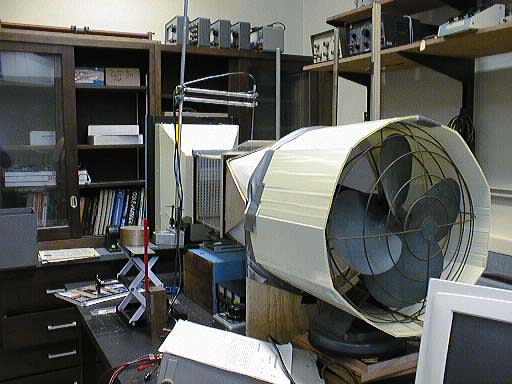
Paulo Pirondi, class of 2001, began the windtunnel project as an experiment in the Techniques of Experimental Physics class. He had worked with one in his high school in the Dominican Republic, and recalled a simple velocity measurement technique based on thermometry. The challenge of doing the experiment was to fit it into one of the two-week time slots for experiments in the Techniques class.
Paulo located a design for a basic windtunnel, and working with Professor McDowell, he built it in just under two weeks. That left only one day to take the measurements needed to investigate his temperature-based velocity measurement idea. The measurements were made in time, and gave hints of the proposed effect.
The next year, Paulo used his Mariner Fund Award money to more fully instrument the windtunnel. To measure velocities more accurately, he set up a Pitot tube:
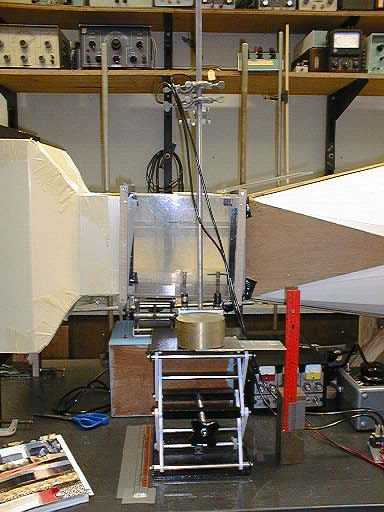
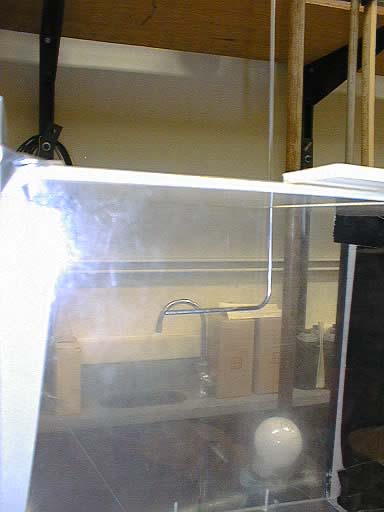
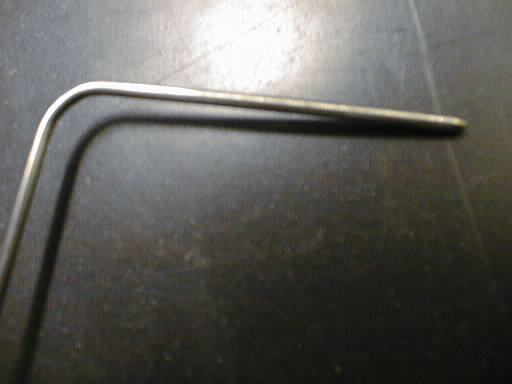
The Pitot tube is actually a tube with a tube, and the pressure difference in the two interior regions has been calibrated as a measurement of wind velocity at the tip. To read this pressure difference, Paulo built a simple electronic circuit to excite a commercially available pressure transducer. The value of the pressure difference is easily read by a data acquisition computer.
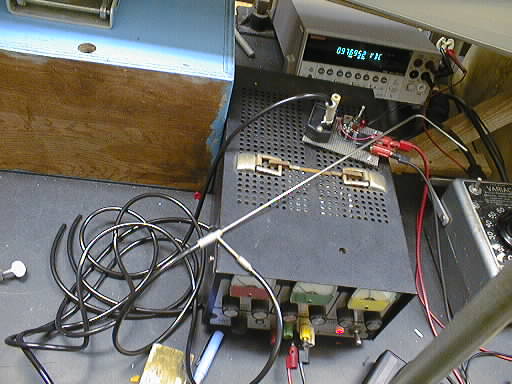
Another fun thing to do with the windtunnel is to visualize the flow of air past objects, such as this wing section:
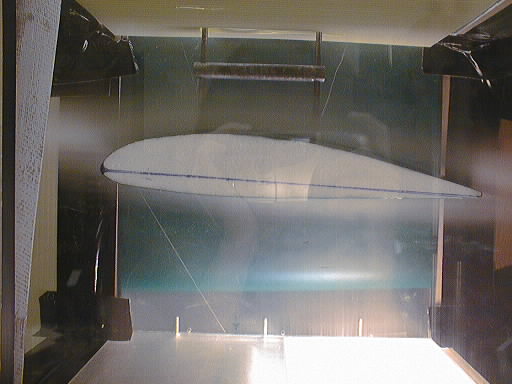
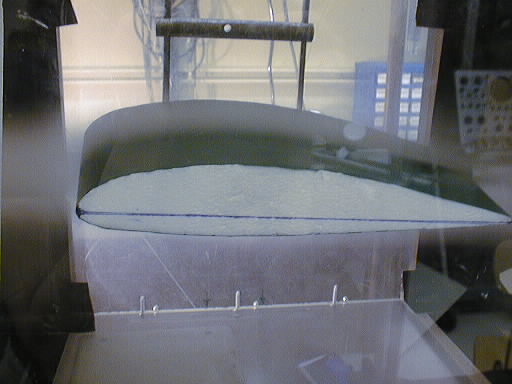
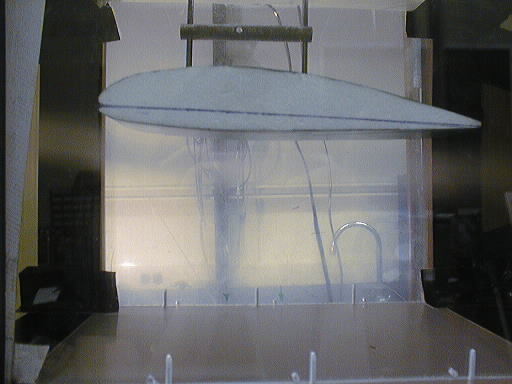
Developing a good source of "smoke" is not easy--the wind speed in the windtunnel is about 10 miles an hour.
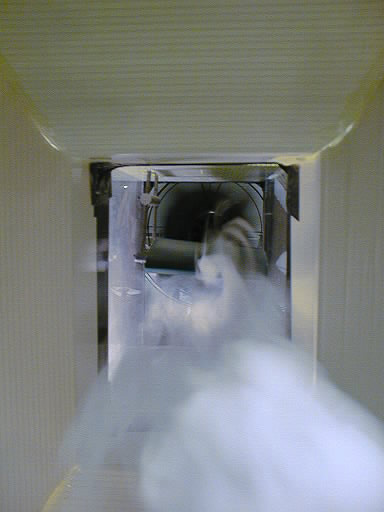 The
value of the flow straightener (the white grid in front of the intake of
the tunnel) is clearly demonstrated by taking the straightener off and
looking through the tunnel. The fan, on the output side, sets up
a vortex.
The
value of the flow straightener (the white grid in front of the intake of
the tunnel) is clearly demonstrated by taking the straightener off and
looking through the tunnel. The fan, on the output side, sets up
a vortex.
Paulo is now completing the 3-2 Engineering program at Washington University in St. Louis.
We have only scratched the surface of the experiments that can
be done with the windtunnel. A better lift/drag apparatus needs to
be designed, built, and used to study the properties of wings. The
airflow in the tunnel needs to be thoroughly characterized and understood
in terms of fluid dynamics. The windtunnel itself could stand to
be upgraded to increase its size, its windspeed, and the quality of its
airflow.
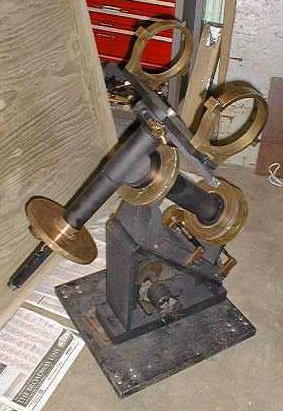
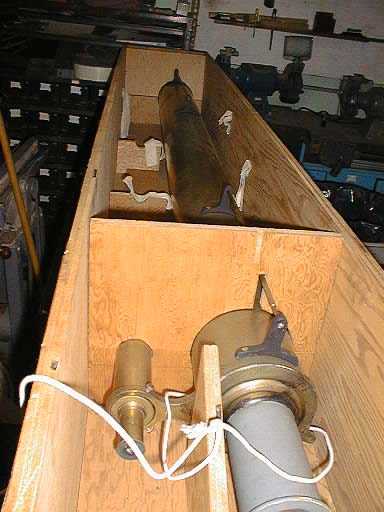
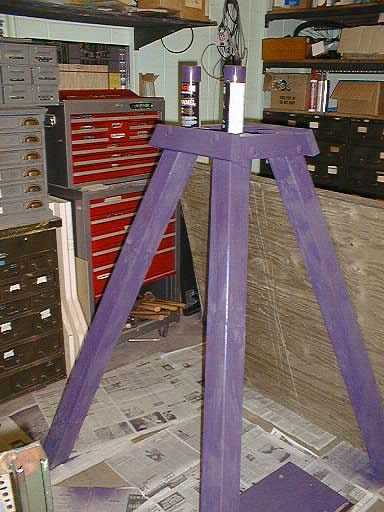
The Physics Department still has the original telescope from the long-gone Knox College Observatory. The six inch refractor, built by Alvan Clark and Sons, was a state of the art instrument in the 1880's. In the 1990's, the Physics club began a restoration effort, lead mostly by Kent Volmar. In the 2000's efforts have focussed on building a temporary tripod so that the telescope can be assembled and displayed. We remain hopeful that eventually this historically important instrument can find a permanent and appropriate display space--maybe even one in which it can see the stars again!